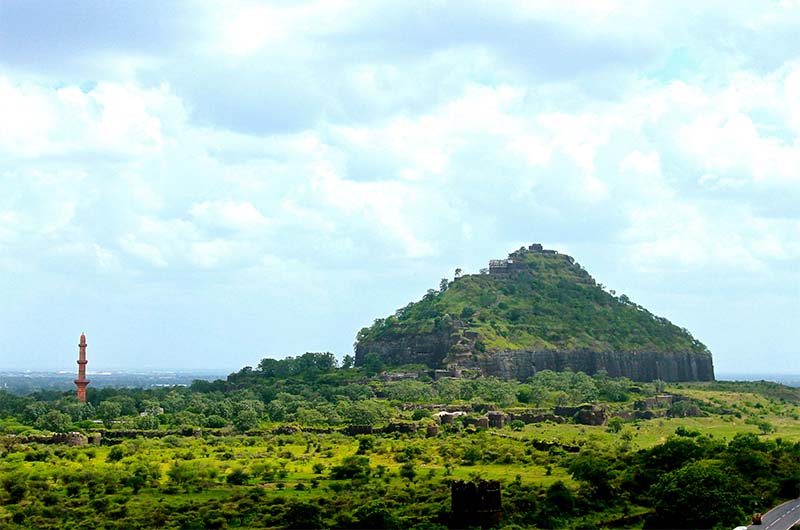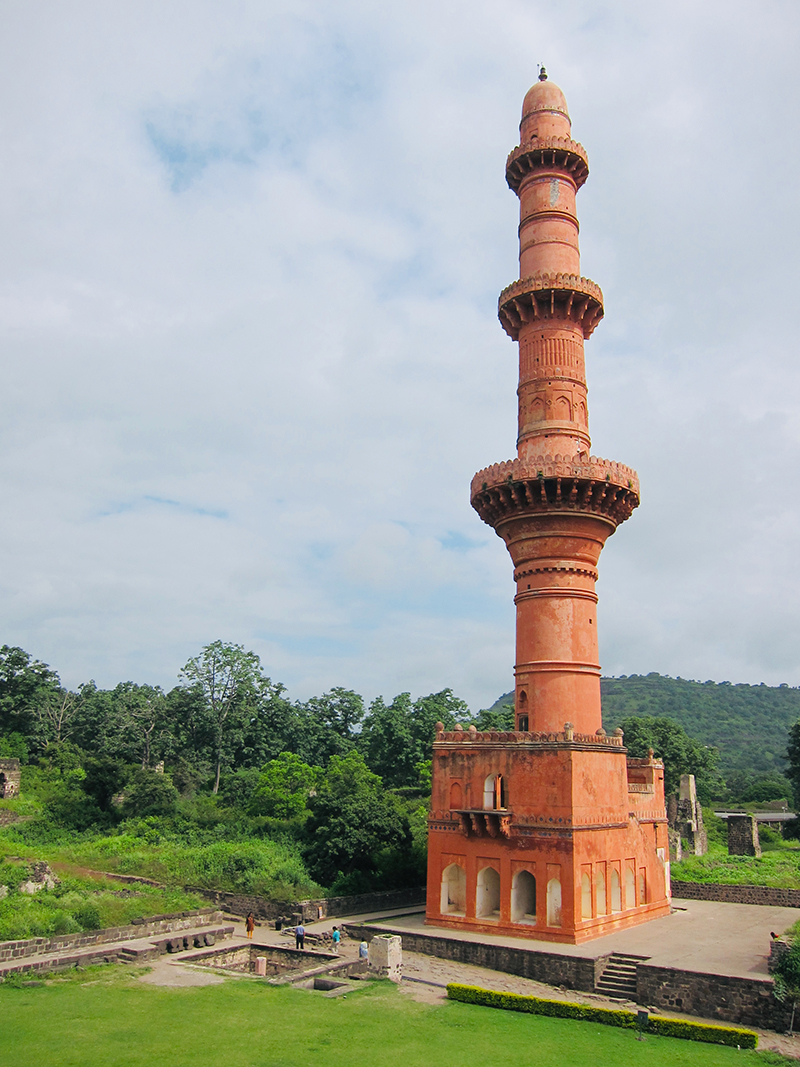Organized chronologically, my dissertation takes a multifaceted approach to studying Daulatabad’s built environment and includes new photographs, plans, maps, drawings, and translations of epigraphs from the region. Several architectural works included in my study have been art-historically examined in detail for the first time; these include, for example, the Old Mosque of Daulatabad (1307), the Chini Mahal (mid-14th century), the Burhan al-Din Tomb (1343–1344), and the Chand Minar (1446). I examine these and other works by focusing on four broad themes: the study of sacred landscapes, the role of religion in shaping architectural spaces, the effects of cross-cultural encounters in shaping a city, and the function of race and ethnicity in architectural design.
The first chapter takes an ecocritical approach to argue that Daulatabad was conceived as an incarnation of the Himalayan landscape in the Deccan. The city was built at the crossroads of ancient pilgrimage networks and belonged to a “sacred landscape” that linked it to nearby pilgrimage sites. The next chapter tackles issues of religious controversy by focusing on two mosques in Daulatabad built from Hindu temple spolia. By analyzing the mosques in light of textual and numismatic sources, the chapter argues that the construction of these mosques indexed different moments of regime change at Daulatabad: that is, from a Hindu to an Islamic polity. The third chapter studies the palimpsestic built environment of Daulatabad, focusing on stepwells, palatial structures, detached epigraphs, coins, ʿidgahs (walled structures with niches for celebrating Eid), and fortifications, while the fourth chapter studies a series of shrines of Islamic mystics constructed around the fortified city. These two chapters challenge the notion that Daulatabad was a passive receptor of ideas from different regions—particularly Delhi—and highlight instead the creativity of the patrons and makers at Daulatabad. The final chapter analyzes a monumental minaret at Daulatabad, the Chand Minar, commissioned by an African military slave, and argues that concerns with race shaped courtly politics in the medieval Deccan. Collectively, these chapters bring together multiple narrative strands to tell a history of Daulatabad through its architecture and urbanism.
“The City of Gods and Fortune” thus contributes to the study of South Asian and Islamic architecture and urbanism by critically engaging with ongoing debates in landscape studies, religious studies, cross-cultural studies, and race and ethnicity studies, as well as their relationships with the arts.
Yale University
Andrew W. Mellon Fellow, 2020–2022
In the coming academic year, Mohit Manohar will be Provost’s Postdoctoral Fellow in the Department of Art History at the University of Chicago.


